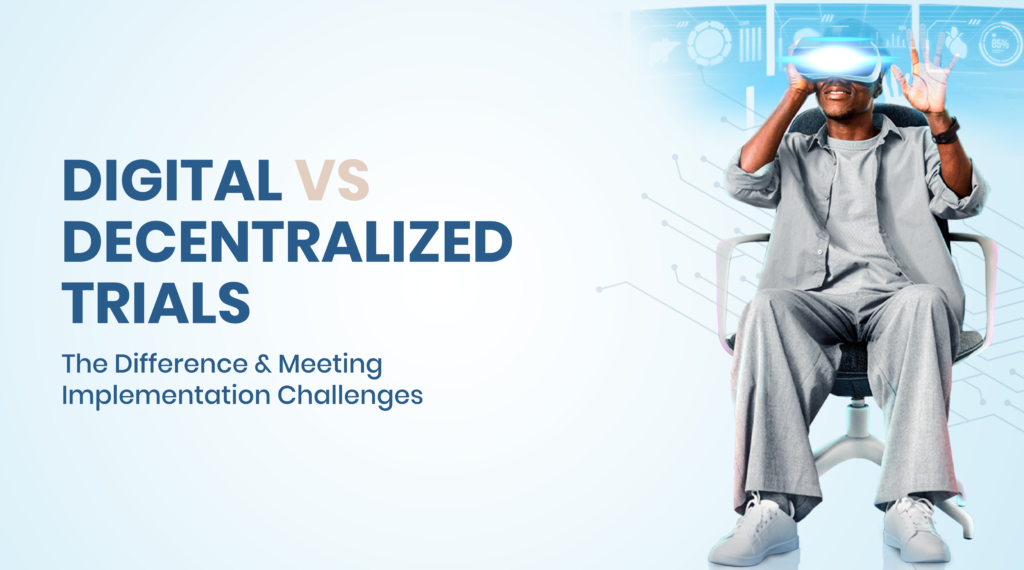Digital clinical trials (DCTs), a recently emerging paradigm since the onset of COVID-19 address many of the inefficiencies of traditional trials, however, to implement and scale this approach, developers will need to accommodate shifts in operational models and embrace new technology.
On the other hand, Traditional clinical research is necessary for developing new medical technologies, however, it is plagued by high costs, lengthy timelines, and inefficient processes. These inefficiencies lead to inequities in participation in clinical trials and relatively affect the demographic populations best served by new medical technologies.
Digital Clinical Trials – What is it?
Simply put DCTs are defined as trials that use novel digital technologies to enable participation outside of conventional clinical settings. They are guided by core principles, including decentralizing access to trial participation, participant-centric design, the efficiency of processes and so much more.
Digital vs. Decentralized
Decentralization refers to enhancing participants’ ability to access a trial, regardless of their physical proximity to the trial center. While decentralization is a core principle of DCTs, all means of decentralizing research aren’t necessarily digital, and not all digital tools can be used in fully decentralized ways.
Digital trials tend to be at the forefront of individual medical technologies; today, that often means leveraging technologies like digital biomarkers and wearable medical monitoring devices.

DCTs offer opportunities to improve all dimensions of clinical trial performance by reducing barriers to recruiting, retaining, and communicating with clinical trial participants. Implementing DCT tools and approaches can benefit trials in several ways:
- Minimize the burden on trial participants: Digital tools enable more trial activities to be completed at home or in local sites, reducing the need for site visits. Digital communications tools and platforms also enable more frequent and robust communications between researchers and participants. Addressing these issues removes or reduces many significant barriers to trial participation and grows the pool of realistic potential participants for a given trial.
- Better recruitment and retention of participants: Using digital tools, including social media and video, can expand the reach of trial recruitment activities and increase and enhance communications between researchers and participants. By improving core trial processes like informed consent and increasing the ability of researchers to address participants’ questions and reservations about participating, trial sponsors can recruit more participants from more diverse regions and demographics and better address communications gaps that contribute to the failed recruitment or retention of trial participants.
- Improved diversity of trial participants: Decreased reliance on centralized locations for recruiting participants and reducing required visits to trial centers allows trials to expand the geographies from which they recruit. The reduced physical burden for participants also makes it easier for older individuals or those with underlying health issues to participate in trials.
- Cost reduction and speedy trials: Increasing recruitment and retention of trial participants and improving and streamlining operations offers the potential to enable more trials to be completed, and those trials to be completed more quickly.
Xcene understands the potential growth of DCTs and the shifting clinical research landscape. Strategic and effective implementation will determine the long-term winners in the DCT space and we aim to position ourselves to thrive while improving interventions with our partners.



